INTRODUCTION What is Business Ethics?
February 23, 2011
The Good Corporation Standard
Here are the ethical requirements developed by the US Institute of Business Ethics and a consultancy company on business ethics. The principles they seek to apply are clear, and they are applied below to different stakeholders (those who have a stake in the future of the company such as employees, customers, suppliers, shareholders, and the local community- see handout on the case studies in this section). A value such as “fairness” will be derived differently depending on the moral theory applied (see separate sections on this site on the major moral theories covered by the syllabus).
Source: http://www.goodcorporation.com/documents/Standard_000.pdf
(Revised July 2010)
The Good Corporation Standard was established in June 2001 and developed in partnership with the Institute of Business Ethics. The Standard is reviewed and updated every three years. This document is the third revision to the Standard, released in July 2010.
The Good Corporation Standard is based on a core set of principles that define a framework for responsible management in any type of organisation. Under each principle, the Standard sets out management practices that can be assessed to determine how well the organisation works in reality. Good Corporation uses an independent assessment process that looks at four levels of evidence for each individual practice and assesses them against a five-point scale, on values (principles) of fairness, responsibility, equality, honesty, non-maleficence, openness and benevolence.
The Good Corporation principles and assessed Practices
While the organisation is accountable to its shareholders (or equivalent for not-for-profit organisations), as defined by law, it is also ethically responsible for a variety of stakeholders.
1. Employees
The organisation provides clear and fair terms of employment.
EMP1: There are clear employment terms and conditions for all employees.
EMP2: There is a process to ensure that the privacy of employee data is respected.
EMP3: There is a clear disciplinary procedure that
is applied fairly.
EMP4: There is an effective process to deal with employee complaints and grievances.
EMP5: Freedom of association and organisation of employees is respected.
EMP6: There are effective employee communication and consultation processes.
EMP7: There is a process to monitor compliance with relevant employment laws and regulations.
EMP8: In the event of significant redundancies, there is mitigation of the adverse impact on employees.
EMP9: There is a process for ensuring that contracted or agency workers have fair terms and conditions.
The organisation provides clean, healthy and safe working conditions.
EMP10: There are procedures to ensure the provision of a healthy and safe working environment and the continuous improvement of health and safety performance.
EMP11: There are processes to provide adequate resources and training for the provision of a healthy and safe working environment.
The organisation has a fair remuneration policy everywhere it operates.
EMP12: There is a process to ensure that employees know and understand how and when their pay and benefits, including bonuses and pensions, are determined.
EMP13: Local cost of living and market rates are taken into account when setting pay and benefits.
The organisation strives for equality and diversity for all present and potential employees. It does not discriminate on the grounds of disability, colour, ethnic origin, gender, sexual orientation, age, religion, political or other opinions.
EMP14: The organisation encourages diversity and recruits, promotes and rewards employees on the basis of merit alone.
The organisation encourages employees to develop
skills and progress in their careers.
EMP15: Employees have appropriate training, learning and development opportunities to support their work and career progression.
EMP16: Employees have regular performance reviews that set objectives and consider skills development and career prospects.
The organisation does not tolerate any sexual, physical
or mental harassment or bullying of its employees.
EMP17: There is a process to ensure that no forms of harassment, bullying or discrimination are tolerated.
The organisation employs only voluntary and appropriately aged employees.
EMP18: There is a policy not to employ forced, bonded or otherwise exploited labour.
EMP19: There are processes to ensure that employment practices for young people
follow internationally accepted standards.
The organisation ensures that all employees understand and can follow responsible business principles.
EMP20: There is a process to ensure that employees understand and can adhere to the principles of this Standard.
2. Customers
The organisation is honest and fair in its relationships with its customers.
CUS1: Terms of business with customers are clear and respected.
CUS2: Customers’ personal and confidential information and intellectual property are
protected and used only in ways explicitly agreed.
CUS3: The organisation ensures that none of its advertising, public statements and customer information is misleading or causes public offence.
CUS4: There is a process for acknowledging and resolving customer complaints and
comments.
CUS5: The organisation regularly seeks and uses customer feedback.
CUS6: The organisation competes fairly and takes measures to prevent anti-competitive
behaviour.
The organisation provides the products and services to the standards that have been agreed.
CUS7: The specification of products and services is clear, including, where appropriate, quality, total cost, delivery charges and timescales for delivery.
CUS8: The organisation’s after-sales obligations are clearly stated and met.
CUS9: There is a process to protect the interests of vulnerable consumer groups.
The organisation takes all reasonable steps to ensure the safety of the products and services it provides.
CUS10: There are processes to protect the health and safety of customers using the organisation’s products and services. The organisation does not engage in bribery or
corruption.
CUS11: There is a process to ensure that there are no forms of bribery or corruption in relation to customers.
3. Suppliers and Contractors
Where an organisation has joint venture partners, the assessment will contain a separate partner section that will include all the points found here in the supplier section.
The organisation is honest and fair in its relationships with its suppliers and contractors.
SUP1: There are clear and transparent processes for selecting suppliers and contractors and
renewing contracts.
SUP2: Terms of business with suppliers and contractors are clear and respected.
SUP3: Personal and confidential information received from suppliers and contractors is
protected and used only in ways explicitly agreed.
SUP4: Intellectual property, such as copyrights, trademarks, patents or software, belonging to suppliers or contractors is used only with their explicit permission.
SUP5: There is a process for acknowledging and responding to supplier and contractor
complaints and comments.
SUP6: Supplier and contractor feedback is taken into account in managing supplier relationships.
The organisation pays suppliers and contractors in accordance with agreed terms.
SUP7: There is a process to ensure that all suppliers and contractors are routinely paid in
accordance with agreed terms.
The organisation does not engage in bribery or corruption.
SUP8: There is a process to ensure that there are no forms of bribery or corruption in relation to suppliers and contractors.
The organisation encourages suppliers and contractors to adopt responsible business practices.
SUP9: There is a process in place to inform suppliers and contractors about the organisation’s responsible business practices and to encourage them to abide by equivalent
principles.
SUP10: The organisation manages the employment, environmental and ethical risks in its supply chain.
SUP11: The organisation ensures that contractors working on its behalf follow responsible
health, safety, labour and environmental practices.
4. Community
The organisation contributes to making the communities in which it operates better places to live and do business.
COM1: Where activities have a potentially significant impact on the community, the company has a process to minimise the negative impacts.
COM2: There is a process in place to deal with enquiries and complaints from members of
the local or national community.
COM3: There is a programme of support for community projects and activities that is
appropriate to the organisation and the needs of the community.
The organisation is sensitive to the local community’s cultural, social and economic needs.
COM4: The organisation engages in meaningful dialogue with the community where there are concerns about its products, services or operations.
COM5: The organisation works in a constructive way to satisfy the requirements of bodies
responsible for regulating its activities.
COM6: There is a process to ensure that risks to public safety resulting from the organisation’s products and operations are minimised.
The organisation conducts itself in a responsible and neutral manner in the affairs of the countries in which it operates.
COM7: There is a process to ensure that any lobbying activities are conducted in a responsible manner.
COM8: There is a process to ensure that there are no forms of bribery or corruption in relation to public officials and public bodies.
COM9: The organisation ensures that it remains politically neutral in all countries in which it operates.
5. Environment
The organisation protects the environment in terms of its use of resources and minimisation of waste and pollution.
ENV1: The organisation identifies and measures the
impacts of its operations and products on the
local and global environment, including
climate change.
ENV2: The organisation monitors and continuously
reduces its environmental impacts.
ENV3: There is a process to monitor compliance with
environmental regulations and industry-specific
codes of practice.
ENV4: There is a process to encourage employees
and contractors working on the organisation’s
behalf to participate actively in environmental
protection.
ENV5: Where appropriate, there is a process to
encourage environmentally responsible use
and disposal of products.
6. Shareholders or equivalent
The organisation is financially accountable to its shareholders (or equivalent) and communicates to them all matters material to the organisation.
SHA1: There is a regular report that provides shareholders with a clear understanding of
the organisation’s finances and operations.
SHA2: Relevant material issues are disclosed to all shareholders in a timely fashion.
SHA3: As appropriate, the organisation’s strategy and prospects are clearly communicated.
The organisation protects shareholders’ funds, manages risks and ensures that funds are used as agreed.
SHA4: There are procedures to guard against insidertrading and misappropriation of information.
The organisation communicates to shareholders (or equivalent) all matters that are material to an understanding of its corporate governance.
SHA5: There is a process to review corporate governance to assess compliance with
relevant local codes.
SHA6: The principles and practices of corporate governance are clearly communicated to
shareholders and variances from relevant codes are explained.
SHA7: There is a process to deal with queries and complaints from shareholders regarding
corporate governance.
7. Management commitment
Management ensures that the organisation conforms to the letter and spirit of this Standard.
MAN1: The responsibility for adhering to this Standard rests with the senior management
team.
MAN2: There is a process to ensure that significant financial and non-financial risks are
assessed and there are appropriate controls in place to manage them.
MAN3: The organisation has a process to manage internal and external conflicts of interest.
MAN4: Confidential reporting channels are in place where appropriate.

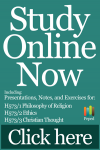
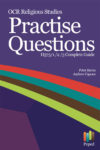
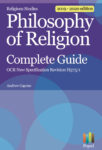
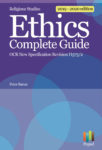
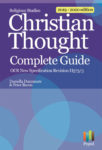
0 Comments